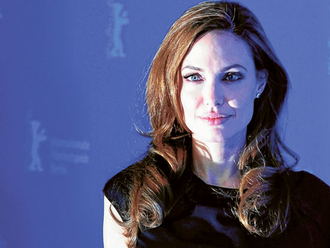When Ryan Murphy, the creator of American Horror Story, announced that the third season of the American TV series would focus on witches, he was riding the crest of a growing wave. Not since the 1990s, the era of Buffy’s geek goddess, Willow Rosenberg, and a scowling Fairuza Balk in The Craft, have witches been so much in demand.
In the young-adult section of bookshops, shelves that recently groaned under the weight of tales of tormented vampires and lovelorn werewolves are now stuffed with stories of witchcraft and magic, from Ruth Warburton’s much-praised Winter Trilogy to Jessica Spotswood’s Cahill Witch Chronicles. Lower down the age range, last month the most recent in Jill Murphy’s long-running Worst Witch series was published, while among the predictions for this Christmas’s bestselling toys are the Bratz spinoff, House of Witchez.
For adults, next year will mark the climax of Deborah Harkness’s All Souls Trilogy, centring on the relationship between a vampire and a feisty American witch.
Even Meryl Streep is getting in on the act – recent stills from the forthcoming film adaptation of Stephen Sondheim’s Into The Woods show the actress transformed into an old hag complete with wild grey hair and long nails.
However, it is on television that the season of the witch has truly taken hold. In addition to American Horror Story, with its tale of voodoo queens and teenage witches, there’s Lifetime’s The Witches of East End, adapted from a novel by Melissa de la Cruz and featuring a family of spellcasters led by Julia Ormond. Vampire Diaries spinoff The Originals (on the Syfy channel) has a central storyline about witchcraft and in Universal’s Sleepy Hollow, Ichabod Crane deals with duelling covens in present-day America.
So why witches, and why now?
“The idea of being able to manipulate supernatural forces still resonates,” says Owen Davies, professor of social history at the University of Hertfordshire and author of America Bewitched: The Story of Witchcraft after Salem. “Witches and ghosts speak to something fundamental and innate in our psyche. It’s an emotional connection.”
Ruth Warburton, whose latest young-adult novel, Witch Finder, will be out in January, feels the growing interest in witches is partially driven by a teenage desire to see girls in less passive roles. The most striking thing about the recent movie Beautiful Creatures (itself adapted from a bestselling teen novel) was that the hero worshipped from the sidelines as his witch girlfriend came into her growing powers.
“Often the traditional way of looking at relationships in young-adult fiction is that the guy has all the power and the interesting life and the girl goes along for the ride, but that’s not the whole story,” says Warburton. It is also arguable that these new shows reflect a changing attitude in television. The era of the anti-hero is coming to a close with the end of Breaking Bad and the final seasons of Mad Men. In their place have come female-centric shows, from Orange is the New Black to Masters of Sex and Scandal. Thus Witches of East End is as interested in the bonds between mothers and daughters as in potions and curses while American Horror Story: Coven conducts a serious examination of outsiderdom, exclusion and the nature of power. It helps that both shows are happy to play with stereotypes.
We tend to see witches as withered crone or seductive enchantress, Baba Yaga or Morgan Le Fay, yet for Witches of East End the key is that these women are a normal family with a family’s ups and downs. Yet Davies argues that the key to witch-related success remains image. “The image of the witch has transformed from someone extremely dangerous, through the sexy domesticated witches of Bewitched to the new wave of young, sexy witches in Charmed and Buffy to now,” he says. “We’re not interested in the mundane reality.” In other words, just as our vampires are now soulful lost boys, so our witches must be appealing in looks, if not always in deed.











